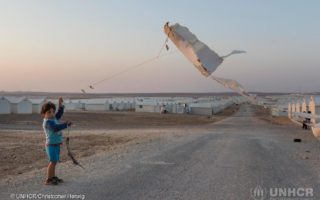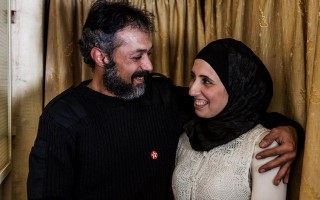According to UNHCR estimates, 13.5 million people (75% of the current population) are in need of humanitarian assistance inside Syria.
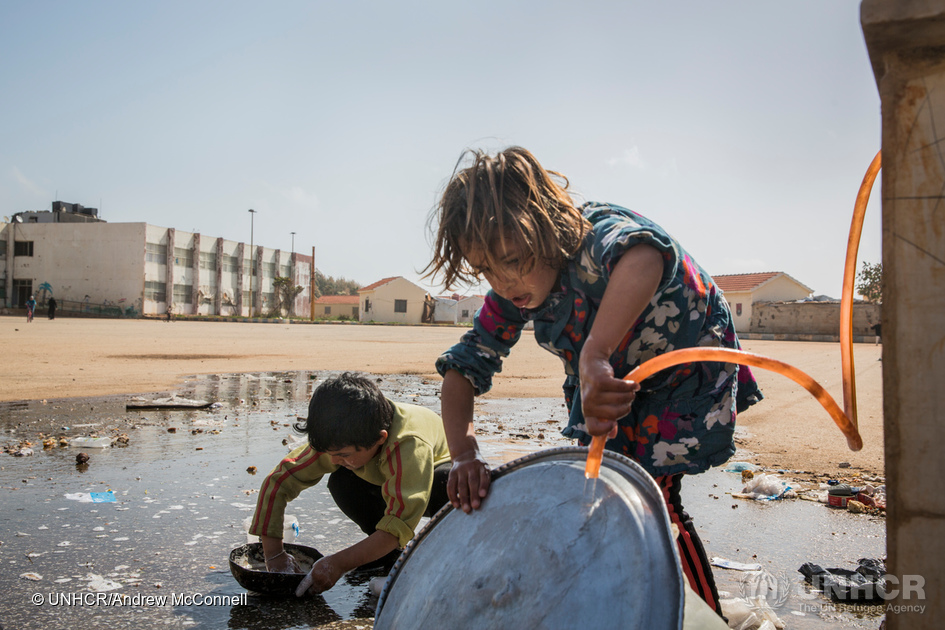
Children wash dishes at a water point in the Pioneer Camp for internally displaced persons in Tartous, Syria. The camp houses 423 families, (2272 individuals) mostly from Aleppo. © UNHCR/Andrew McConnell
Before the war began in 2011, Syria was considered a stable middle-income country. Literacy rates were at 86%, unemployment levels a relatively low 14%, and Syria itself was hosting refugees from all over the region. But in the five years since the conflict began, civilians have seen their normal life transformed into a nightmare of conflict and persecution.
And while millions have chosen to undertake dangerous and uncertain journeys over international borders, millions more have been trapped in besieged cities, turned away from closed borders, or cut off from escape routes by regional outbreaks of violence. Those left behind are struggling to survive, trapped in war-torn cities, facing daily hardships and the looming threat of violence.
On all sides of the conflict, civilians have been deliberately targeted. From airstrikes to the bombings of crowded cities, schools, and medical centres, to widespread human rights violations, the situation is desperate in many parts of Syria. This “terrorism against civilians” is a deliberate tactic to render certain areas unlivable and allow Syrian authorities or insurgent groups to gain control.
Some 6.5 million people have been forced to flee their homes and seek shelter elsewhere in the country in order to escape conflict and persecution. Although many have joined friends or family in rural areas or cities outside of conflict zones, thousands more are living in temporary camps. Many of these internally displaced persons (IDPs) will be forced to relocate multiple times as the fighting continues.
With unemployment rates skyrocketing to over 50%, nearly three-quarters of the country’s population is now living in extreme poverty. Access to aid and basic needs is often limited, particularly in hard-to-reach and besieged areas. Even in relatively stable parts of the country, the rising cost of living is taking a toll: staples such as milk and bread often cost hundreds of times more than a few years ago. Since the conflict began, over 250,000 people have been killed.
So who remains in Syria?
In 2011, the population was around 24 million people. In 2016, that number has dropped to less than 18 million.
Ongoing conflict has made it impossible to obtain up-to-date population data from within the country, and the most recent estimates are from 2014. However, the demographics of Syrian refugees are well documented by host countries.
By comparing Syria’s most recent population data with refugee statistics, it is possible to estimate the demographic split of those who remain within the country’s borders in 2016.
Children
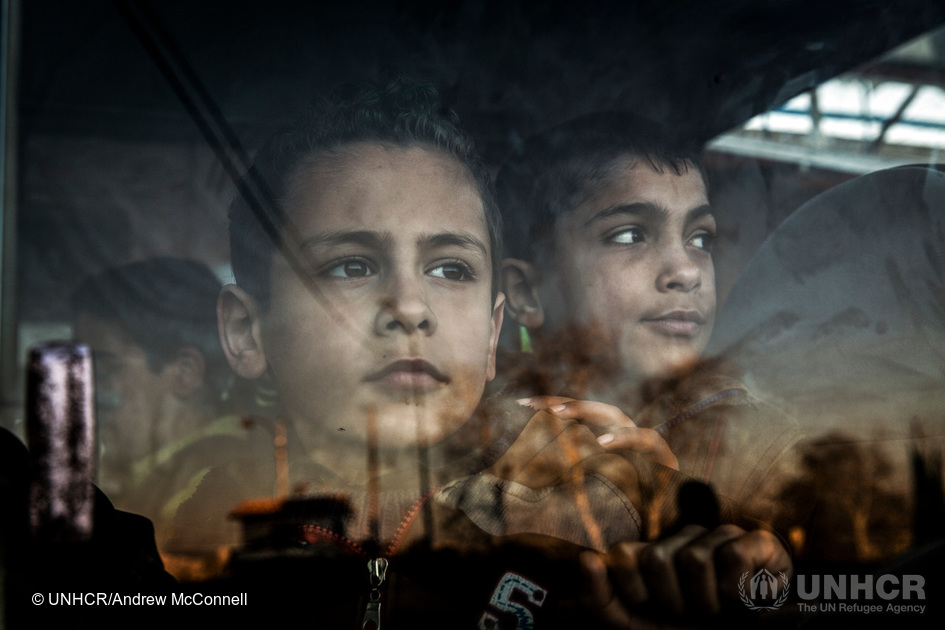
Mohammed Adlani, 8 (left), and Mohammed Chami, 11, take a bus to school from the Islamic Charity Association Orphanage in Homs, Syria. Mohammed Adlani’s father died and his mother has disappeared, he lives in the orphanage with his 3 brothers. Mohammed Chami’s mother died and he lives in the orphanage with his 2 sisters and one brother because his father is unable to take care of them due to the conflict. © UNHCR/Andrew McConnell
39% of Syrian refugees registered by UNHCR are 11 years old or younger. These child refugees represent one of the most vulnerable populations in the world, and are at risk of persecution, abuse, and dangerous survival tactics such as child labour or young marriages.
In 2014, 32% of Syria’s population was 14 years old or younger, meaning a disproportionate number of children have left the country as refugees. Despite this, we estimate that at least 5 million children aged 14 years old or younger remain behind in Syria in 2016. Life for those who are unable to flee is often even more difficult and dangerous than it is in refugee camps.
The Violations Documentation Center works to record and remember victims of the civil war. To read through the names of all the children who have been killed would take 19 hours.
To read through the names of all the children who have been killed would take 19 hours.
Youth & Students
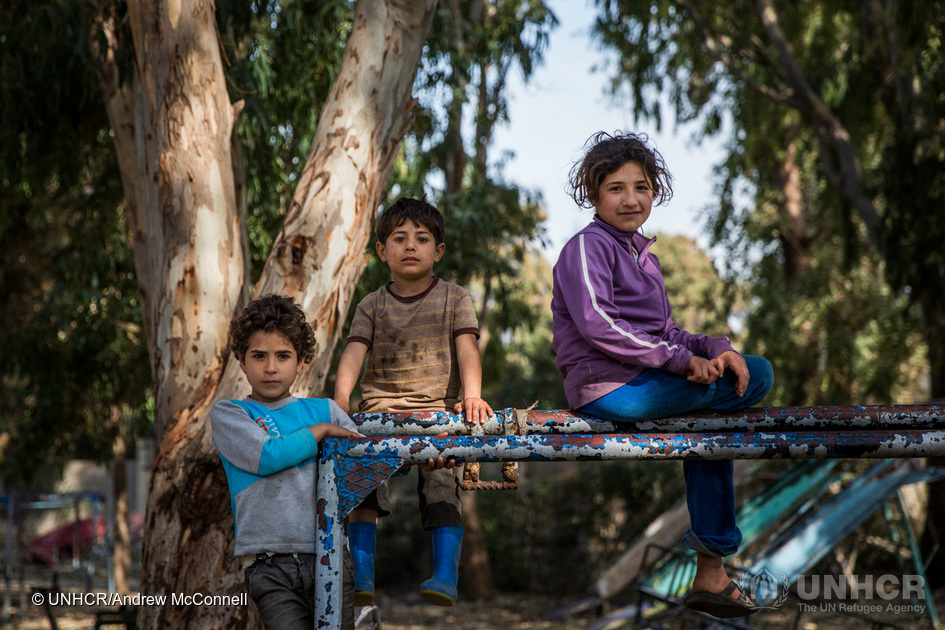
Siblings from Aleppo, Aminah, 10, Hussein, 4, and Aya,12, play in an old playground in the Pioneer Camp for internally displaced persons in Tartous, Syria. © UNHCR/Andrew McConnell
In 2014, 20% of Syria’s population was aged 15-24. Many of these students and young people have fled, and over 51% of Syrian refugees are under 18 years old.
By our estimates, that means at least 3 million youth are still living in Syria. Of those who remain, school attendance has dropped by over 90% in some areas, and the majority of adolescents will have experienced death in their family.
School attendance has dropped by over 90% in some areas, and the majority of adolescents will have experienced death in their family.
Millions of young people and students have spent the transformative years of their lives in limbo, waiting for the end of a conflict that seems interminable. Despite the hardships, this generation is full of optimism for the future.
Solaf is from Bosra in Syria. She is only nine, but she remembers the day the missile hit her house and her family was forced to flee. Regardless of what has happened to her family, she holds fast to her dream of becoming a doctor:
“I want to become a doctor and treat diabetes. Why? Because my mother has diabetes. I want to help my family because they are all I have.” Watch Solaf’s story.
Senior Citizens
Only 3.2% of Syrian refugees are 60 years or older. In 2014, around 6% of the Syrian population fell in this age range. This suggests that the oldest generation of Syrians are those least likely to attempt the refugee journey, and we estimate that around 1 million of them remain in the country.
Although some of these older men and women are unable to leave Syria, many will have chosen to stay with their homes, heritage, and livelihoods—the culmination of a lifetime of work.
Life expectancy in Syria was 70 years of age in 2011, but that number has dropped significantly during the conflict to just 55.
Families and Professionals
The remainder of the civilians in Syria are made up of men and women between the ages of 18 and 60.
Many of them are well-educated and speak English or French as well as Arabic. Many have University degrees or were studying for one before the war made that impossible. Around the world, Syrian refugees and those of Syrian descent will know friends and family who remain behind. They are normal people, exactly like the citizens of any other country, except that their country has been torn apart by war.
Of those left behind, women are particularly vulnerable and have suffered abuse from Syrian authorities as well as fundamentalist groups. However, the majority of Syrian civilians are in need of humanitarian aid.
UNHCR in Syria
The UN has the largest humanitarian presence on the ground in Syria. Along with our partners, we are delivering emergency aid, protecting the rights and well-being of internally displaced persons, and helping civilians to build a better future. Where possible, we work with local governments to raise capacity and resilience of both refugees and civilians.
In 2015, UNHCR delivered over 9 million core relief items, including kitchen sets, thermal blankets, and sleeping mats to over 3 million vulnerable people. To do so, we supported missions into 33 hard to reach areas where ongoing fighting has effectively cut off the civilian population, including critical winter missions to over 450,000 individuals.
The UNHCR 2016 Syria Humanitarian Response Plan outlines our ongoing efforts to provide humanitarian support and protection to 13.5 million people inside Syria.



